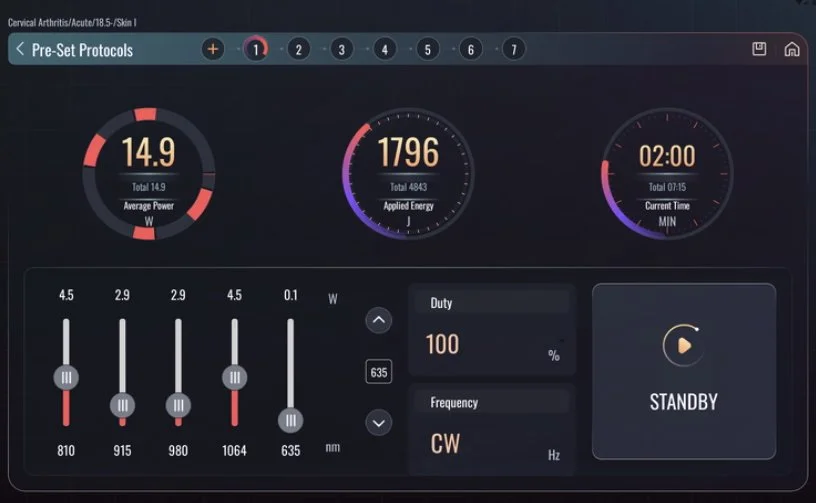IN THIS LESSON
Versatility Matters:
Think of Class IV lasers like having a really advanced toolbox instead of just one simple tool. Just like you wouldn't use the same screwdriver for every job around the house, your body's different tissues and injuries need different types of laser light to heal properly. Here's why having options matters so much:
Click Image or THIS LINK for Published Studies
Ability to Combine Wavelengths
Imagine wavelengths like different "colors" of invisible light that each have their own special job. Different wavelengths penetrate to different depths in your body and do different things:
810nm wavelength acts like a cellular battery charger - it gets absorbed by the tiny power plants in your cells (called mitochondria) and makes them produce more energy (ATP) to help repair damage. This wavelength is great at reducing inflammation and helping tissues heal faster.
980nm wavelength is more like a heating pad - it gets absorbed by the water in your tissues and creates gentle warmth that increases blood flow, reduces muscle spasms, and provides immediate pain relief. However, because it creates more heat, it doesn't penetrate as deep as 810nm.
1064nm wavelength is the deep penetrator - it can reach deeper into your body (up to 5-6mm) with less heat, making it perfect for treating injuries in thick muscles or around joints. It's also really good at affecting nerve pain signals.
When you combine all three wavelengths together (called a "TriWave laser"), it's like having a team of specialists all working on your injury at the same time. Each wavelength handles a different part of the healing process, so you get better results faster than using just one wavelength alone.
Ability to Adjust Total Power
Think of laser power like the volume on your stereo - sometimes you need it loud, sometimes quiet, depending on what you're trying to accomplish.
Higher power (measured in watts) means the laser can:
Penetrate deeper into thick muscles and tissues
Treat larger areas faster (like your whole back instead of just tiny spots)
Deliver more healing energy in less time - a Class IV laser can give the same amount of energy in 4-7 minutes that would take a weaker laser over 3 hours
Lower power is better for:
Treating sensitive areas or thin skin
Working near the surface
Avoiding overheating delicate tissues
Having adjustable power is like having a dimmer switch - the doctor can dial in exactly the right amount of energy your specific injury needs, whether it's a surface cut or a deep muscle strain.
Ability to Adjust Pulse Patterns
Pulse patterns are like the difference between a steady stream of water from a hose versus short bursts.
Continuous wave (steady beam) delivers energy constantly and is great for:
Getting maximum power to the cells quickly
Deep heating and immediate pain relief
Treating large areas efficiently
Pulsed patterns turn the laser on and off rapidly and offer special benefits:
Low frequencies (2-10 Hz) act like natural pain killers
Medium frequencies (around 500 Hz) boost cellular repair and healing
High frequencies (2,500+ Hz) fight inflammation and infection
The "off" time between pulses prevents overheating and actually allows the laser to use higher peak powers safely. It's like letting your tissues "breathe" between treatments while still getting all the healing benefits.
Why This All Matters
Having versatility in wavelengths, power, and pulse patterns means your doctor can create a completely customized treatment plan for your specific problem. Whether you have a surface wound, deep muscle injury, nerve pain, or inflammation, the laser can be adjusted to target exactly what needs healing. This personalized approach leads to faster recovery, better pain relief, and more successful treatments overall.
It's the difference between using a basic flashlight versus having a high-tech spotlight that can change colors, brightness, and beam patterns - both might provide light, but only one can be perfectly adjusted for any situation you encounter.
